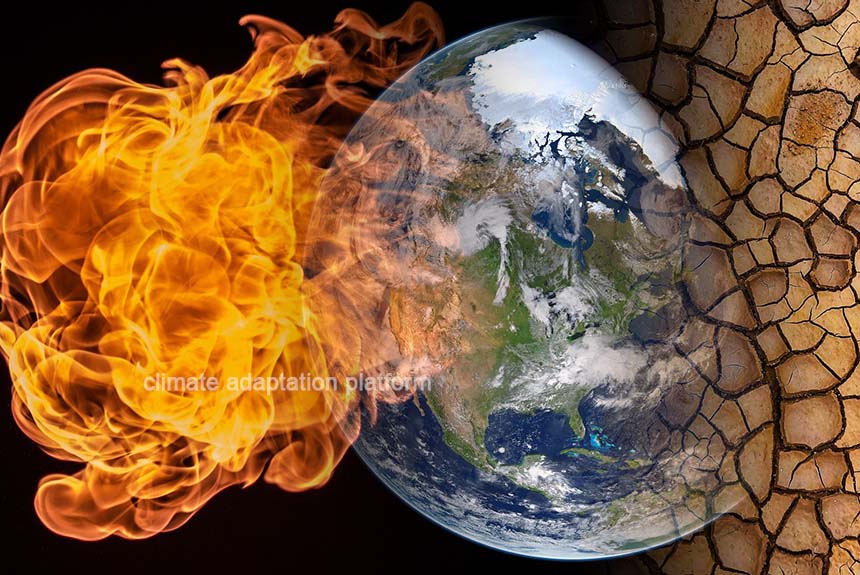As the planet edges closer to climate tipping points, a new study published in Nature delivers an unsettling reality: even with the most aggressive climate action, we may only have a 50% chance of keeping global warming below 1.6°C.
The research “Feasibility of peak temperature targets in light of institutional constraints” reveals that it’s not just technology or policy that holds the key to our future—it’s the strength of our institutions. Weak governance could be the Achilles’ heel in the battle to avoid catastrophic climate impacts, raising the stakes higher than ever for global leaders.
Previous studies have shown that the rise in global temperature will peak when global emissions reach net zero levels. Reaching net-zero emissions quickly is at the heart of achieving the Paris Agreement of limiting warming to 1.5°C.
Led by the Center for Global Sustainability (CGS) at the University of Maryland, in partnership with members of the ENGAGE project, researchers have delved into the feasibility of ambitious peak temperature targets within the range set by the Paris Agreement.
Considering the current state of knowledge, including the observed emissions rebound after the COVID-19 pandemic and the improved understanding of feasibility, the study utilised eight state-of-the-art global multi-regional process-based integrated assessment models (IAMs) to explore 20 scenarios. The findings revealed that the institutional dimension, particularly accounting for the limits of countries to enable effective climate regulation, has the most significant influence on feasible peak temperature.
The study notes that the IPCC Sixth Assessment Report (AR6) assessment of many scenarios finds nearly 100 scenarios that could still limit warming to 1.5°C with no or limited overshoot. However, the feasibility of these findings has been questioned, and recent increases in emissions have added to these doubts.
The study underscores that while technological advancements in low-carbon energy technologies are progressing, the influence of institutional capabilities, such as the effectiveness of government policies, on the successful deployment of these technologies at the scale required by climate goals cannot be overstated.
The authors write, “Our results show that the most ambitious scenarios accounting for the institutional feasibility concern only allow for a likelihood of 5–45% of staying below 1.6 °C at peak warming, with considerable differences across models and assumptions around the institutional constraints. The world needs to be prepared for the possibility of an overshoot of the 1.5 °C limit by at least one and probably multiple-tenths of a degree, even under the highest possible ambition.”
The study also further states that “without much increased near-term climate policy ambition everywhere, and especially without dedicated efforts to improve institutional capacity to enact fast mitigation, particularly in countries with currently low government effectiveness scores, an even higher overshoot will soon become inevitable. Our study does not imply that the 1.5 °C target needs to be abandoned. Rather, it provides a nuanced picture of what needs to happen to peak temperatures at a minimal overshoot above 1.5 °C to decrease temperatures afterwards. However, given our focus on improved understanding of near- and medium-term feasibility constraints, we look only at the trajectories until peaking and do not discuss in detail strategies and trade-offs for temperature reductions after the peak.”
The study notes that this new global temperature rise estimate and how fast the world achieves this or misses it will determine what climate adaptation needs and strategies we must implement.
The world is running out of time—and excuses. This study shows that without a rapid overhaul of global governance systems, climate ambition alone won’t be enough to save us from overshooting the critical 1.5°C threshold.
The message is clear: our future hinges not only on cutting emissions but on building institutions capable of enforcing the change needed to avert climate change disasters. Will the world rise to the challenge or watch as its last chance slips away?
Source:
Bertram, C., Brutschin, E., Drouet, L. et al. Feasibility of peak temperature targets in light of institutional constraints. Nat. Clim. Chang. 14, 954–960 (2024). https://doi.org/10.1038/s41558-024-02073-4
New Study Examines the Feasibility and Ambition in Global Climate Policy Scenarios. (2024, August 12). University of Maryland School of Public Policy. Retrieved from https://cgs.umd.edu/news/new-study-examines-feasibility-and-ambition-global-climate-policy-scenarios



Leave a Reply